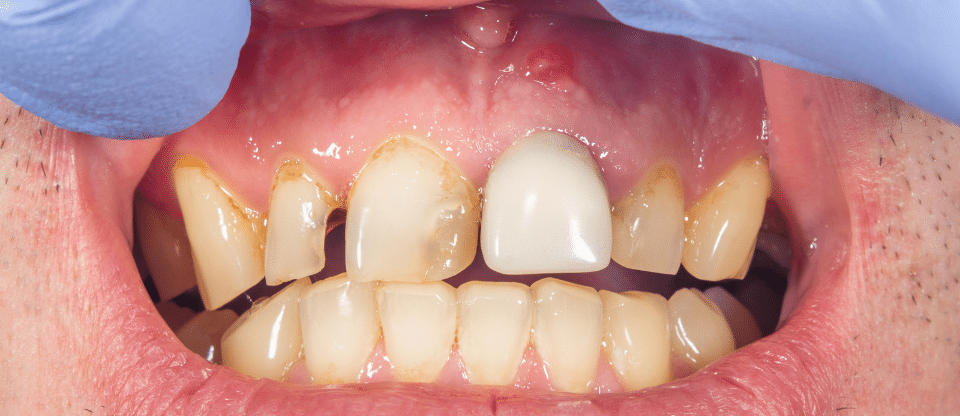Populations With Poor Oral Hygiene
Oral healthcare is an indicator of a body’s overall health, but for many of the world’s poor, oral health care is one of the most neglected areas of medical care available. Thankfully though, in some regions, oral healthcare is improving, according to The World Health Organization (WHO).
Poor oral hygiene can result in a major health burden for many countries and affect people throughout their lifetime, causing pain, discomfort, disfigurement, and even death. Most low- and middle-income countries are unable to provide services to prevent and treat oral health conditions. There is an extraordinarily strong correlation between socioeconomic status (income, occupation, and educational level) and the prevalence and severity of oral diseases.
Top 5 Countries with the Worst Oral Health Care
- In The Philippines, 90% of the population suffers from tooth decay and 100% of children ages 3-5 have cavities.
- In India, 95% of all adults are reported to have some form of gum disease, and 50% do not use a toothbrush.
- Nearly 50% of all six-year-olds in Australia have decay in their baby teeth
- Children aged 12 years and under in Bolivia have an average of four teeth either decayed, filled, or missing
- Poland has the highest tooth decay rates in the world
What dental concerns are arising from lack of treatment?
Gum disease
Gum disease affects the tissues that both surround and support the tooth. The disease causes bleeding or swollen gums (gingivitis), pain, and sometimes bad breath. In its more severe form, the gum can come away from the tooth and supporting bone, causing teeth to become loose and fall out. The main cause of gum disease is poor oral hygiene.
Tooth loss from decay
Tooth decay happens when plaque forms on the surface of a tooth and converts the free sugars contained in foods and drinks into acids that destroy the tooth over time. A continued high intake of free sugars, inadequate access to fluoride, and a lack of removal of plaque by tooth brushing can lead to pain and sometimes tooth loss and infection.
Oral cancer
Oral cancer includes cancers of the lip, other parts of the mouth, and the oropharynx. It is more common in men and older people and varies strongly by socio-economic condition. Tobacco, alcohol, and areca nut (betel quid) use are among the leading causes of oral cancer in socioeconomically deprived areas.
Noma
Noma is a severe gangrenous disease of the mouth and the face. It mostly affects children between the ages of two and six years suffering from malnutrition, affected by infectious disease, living in extreme poverty with poor oral hygiene, and/or with weakened immune systems. Noma starts as a soft tissue lesion (a sore) of the gums, inside the mouth. The initial gum lesion then develops into gingivitis that progresses rapidly, destroying the soft tissues and further progressing to involve the hard tissues and skin of the face. Noma is a particular concern amongst African children.
Cleft lip and palate
Clefts of the lip or palate can stem from family history as a major cause. However, poor maternal nutrition, tobacco consumption, alcohol and obesity during pregnancy also play a role. In low-income settings, there is a high mortality rate in the neonatal period. If lip and palate clefts are properly treated by surgery, complete rehabilitation is possible.
Oral hygiene inequalities are related to oral diseases affecting the poor and socially disadvantaged members of society. There is an extraordinarily strong and consistent association between socioeconomic status (income, occupation, and educational level) and the prevalence and severity of oral diseases.
How are countries overcoming these issues?
The promotion of proper dental care is one of the best ways to help fight cavities, and other noncommunicable oral diseases. By making hand washing and tooth brushing part of the everyday curriculum, children can become educated in the importance of oral hygiene. Dental care has been a consistent reason for children to miss school, but UNICEF has found that for school children, tooth-brushing can result in reductions of up to 27 per cent in absenteeism.
The WHO Global Oral Health Programme is also working to reduce diseases caused by poor oral health care. The focus is on tooth-brushing and proper diet, including the reduction of tobacco and excessive alcohol use.
In the UK we can learn from these countries to make sure that we avoid excessive alcohol intake, minimise smoking where possible and continue to focus on the healthcare of our teeth. All areas combined need to be looked at to help prevent tooth loss, gum disease, and some forms of oral cancers.
Related blog: How to improve oral hygiene


